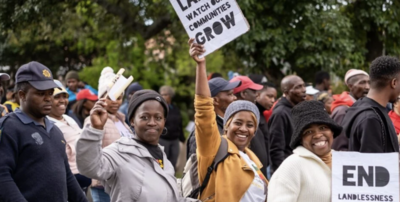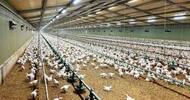Viewing cable 09MONROVIA952, LIBYA INVESTS $30 MILLION IN LIBERIAN RICE DEVELOPMENT
If you are new to these pages, please read an introduction on the structure of a cable as well as how to discuss them with others. See also the FAQs
| Reference ID | Created | Released | Classification | Origin |
|---|---|---|---|---|
| 09MONROVIA952 | 2009-12-22 18:04 | 2011-08-26 00:00 | UNCLASSIFIED//FOR OFFICIAL USE ONLY | Embassy Monrovia |

VZCZCXRO3238 RR RUEHMA RUEHPA DE RUEHMV #0952 3561804 ZNR UUUUU ZZH R 221804Z DEC 09 FM AMEMBASSY MONROVIA TO RUEHC/SECSTATE WASHDC 1537 INFO RUEHZK/ECOWAS COLLECTIVE RUEHTRO/AMEMBASSY TRIPOLI RUEATRS/DEPT OF TREASURY WASHINGTON DC RUCPDOC/DEPT OF COMMERCE WASHINGTON DC RHMFISS/DEPT OF JUSTICE WASHINGTON DC
UNCLAS MONROVIA 000952 SENSITIVE SIPDIS E.O.12958: N/A TAGS: ECON PREL EAGR ASEC LI SUBJECT: LIBYA INVESTS $30 MILLION IN LIBERIAN RICE DEVELOPMENT ¶1. (U) SUMMARY. The GOL and the Foundation for African Development Aid's (ADA) $30 million concession for large-scale commercial rice production, funded through Libyan African Investment Portfolio, is the first large scale domestic rice program in a country that imports over 55% of all its rice -- a staple in the Liberian diet. Ambassador recently visited the site in Lofa County, near the Guinean border, to witness the first harvest, which will be used for seedlings. ADA will introduce its locally cultivated rice in July 2010, contributing to the availability and affordability of rice. Improved rice production is key to Liberia's food security, and the ADA agreement is seen as the first step in building a sustainable local crop. However, without a sufficient transportation network, ADA and other farmers will continue to struggle to distribute and export their crop. Given ADA's proximity to the Guinean border, issues of cross-border activities have arisen. END SUMMARY. ¶2. (U) ADA is financed through a $30 million loan from the Libyan African Investment Portfolio (LAIP) at six percent interest for ten years with a three year grace period. The 15,000 hectare, 20-year concession was signed in 2008, and expects to supply the local market in mid 2010 according to ADA Project Manager, Elvis Morris. Its first harvest will be used primarily for seedlings. The concession agreement includes the construction of a rice processing plant, housing facilities, medical centers and schools for workers- which the Ambassador did not see during her trip. ADA's initiative should be a positive influence on the nation's rural economy, bringing much needed employment and development by expanding ADA's current workforce of 1,000 to over 6,000 in three to four years. ¶3. (SBU) The Ambassador, along with the SRSG, visited the Lofa County concession area on December 18 trip. In her discussion with the project manager, she noted rampant rumors that ADA is employing mostly Guineans at the expense of the local Liberian population. Morris, one of only two expatriate staff at ADA, noted with the porous borders within sight of the concession area and close ethnic ties of the people on both sides, it was impossible to differentiate the two and acknowledged that some of the workers may in fact be from Guinea. ¶4. (SBU) The Ambassador also raised the concern that ADA's goal to provide Liberia with enough domestic rice crop to meet demand could squeeze out smaller farms. Morris said that many farmers will simply turn to cash crops as the price for rice falls, and ADA plans to regionally export some of its crop, so a market will remain in Liberia. Overall, the large-scale mainly mechanized process was impressive, although few of the promised social structures were yet realized. ¶5. (U) ADA's investment will complement other donor initiatives such as the World Bank's emergency food response. The Bank signed a $10 million grant agreement with the GOL in May 2008 to assist it in tackling the sharp increases in the price of food. When the global food crisis hit Liberia in 2008, the GOL adopted a three point comprehensive strategy to alleviate the impact: mitigating domestic price rise and maintaining consistent supply; maintaining access to food among vulnerable populations; and promoting domestic food production. The government at that time eliminated the two dollar consumer tax on 50kg bags of imported rice; removed tariffs on agricultural equipment; allocated $750,000 to a "rice stabilization" fund to purchase seed rice for local farmers; and increased the FY2009/2010 agriculture budget by about 30%. ¶6. (SBU) COMMENT: The scarcity of rice was blamed for the country's political unrest in 1979, which led to 25 years of instability. The political risk associated with the scarcity and high price of rice is great, and GOL hopes ventures such as ADA will secure the supply. Although ADA plans eventual harvests of 270,000 metric tons, which will satisfy domestic demand, poor infrastructure will prevent distribution. Without significant road improvements, it is unlikely that the ADA rice will reach markets in Maryland, River Gee, or Grand Kru and Liberia will continue with an insecure food supply. Regional exportation from Liberia will be difficult as well, and a more likely scenario would include exporting crop through Guinea using the existing railways on the other side of the border. Mechanized farming is the only way to create food security in Liberia, enticing people back into the farms from the city slums and lowering food costs for all. To do so, however, requires capital investment not only in the farms but in the surrounding infrastructure. That ADA appears to be a success has as much to do with its location - Lofa County with its arable land and industrious people. We hope this can be replicated elsewhere. THOMAS-GREENFIELD











